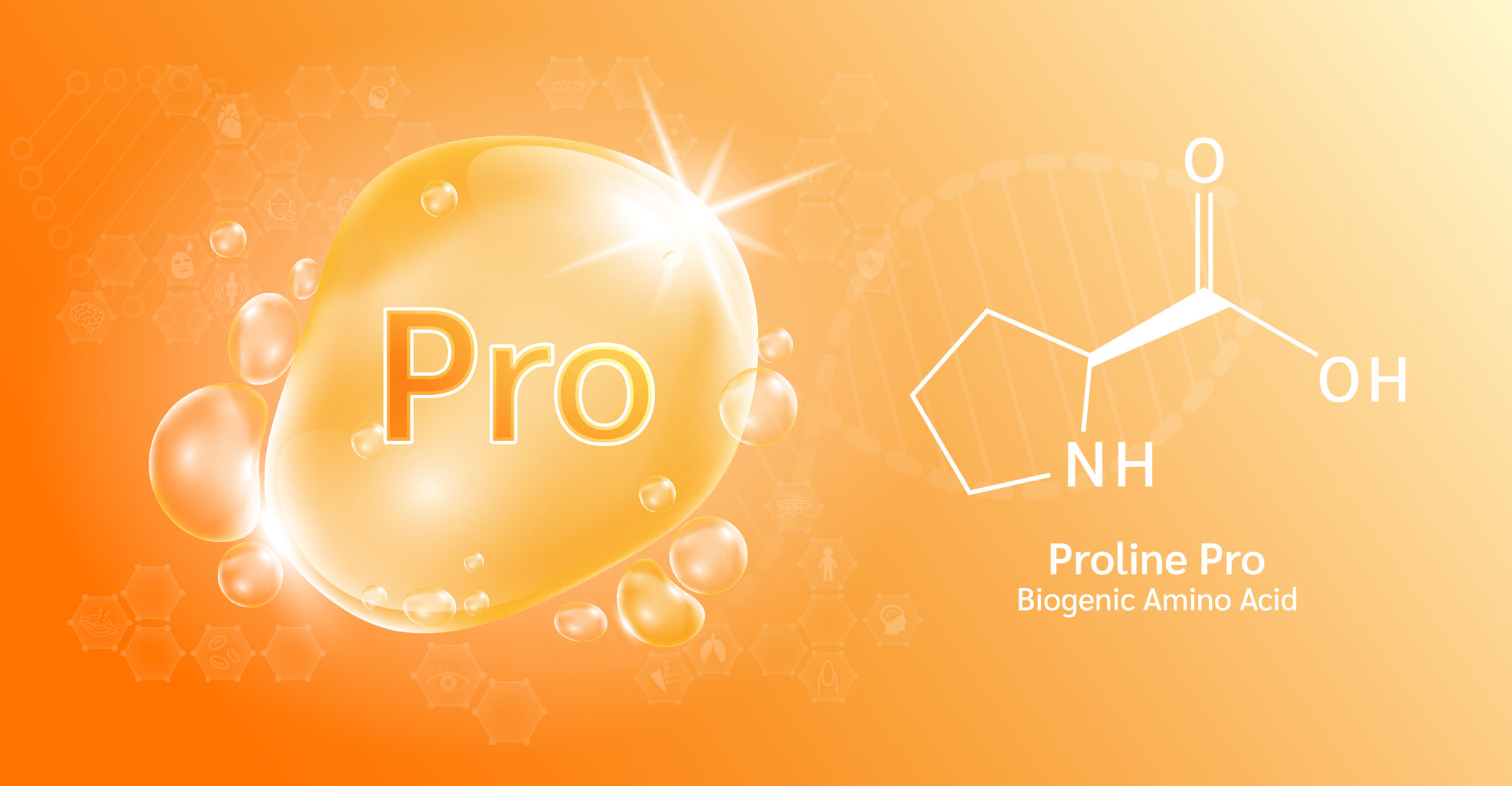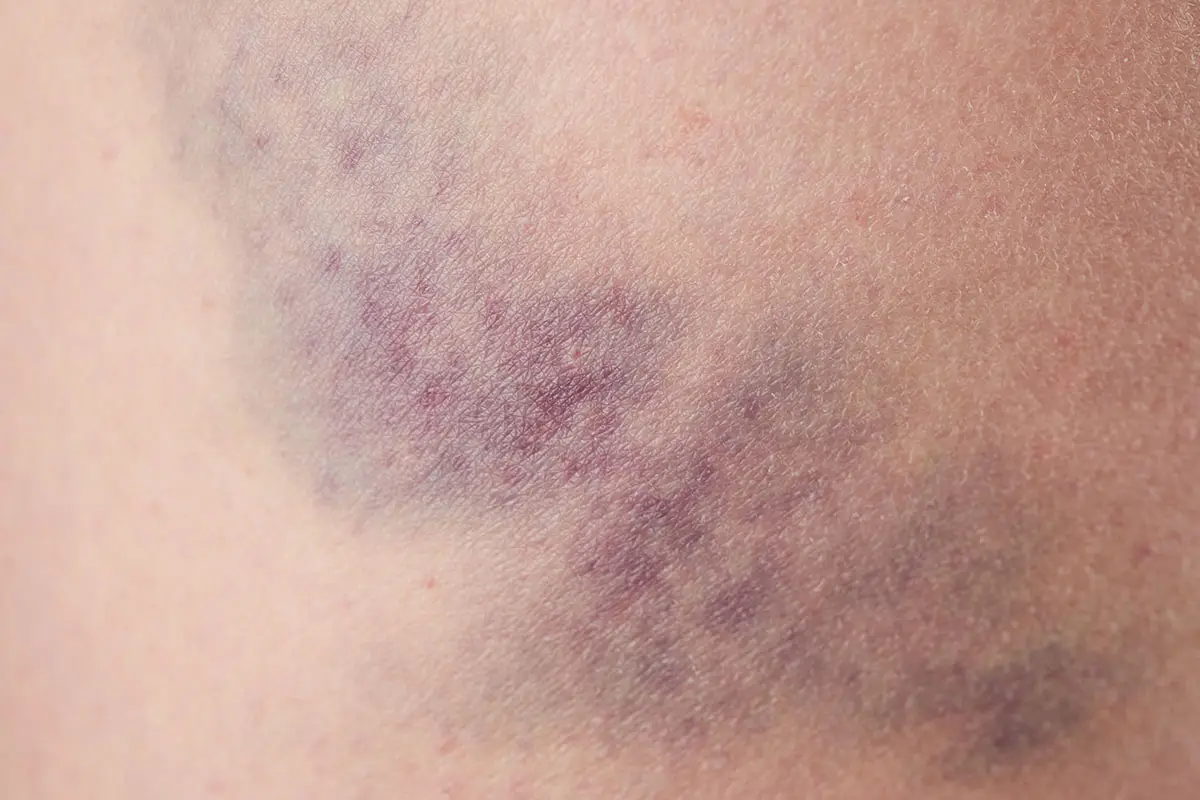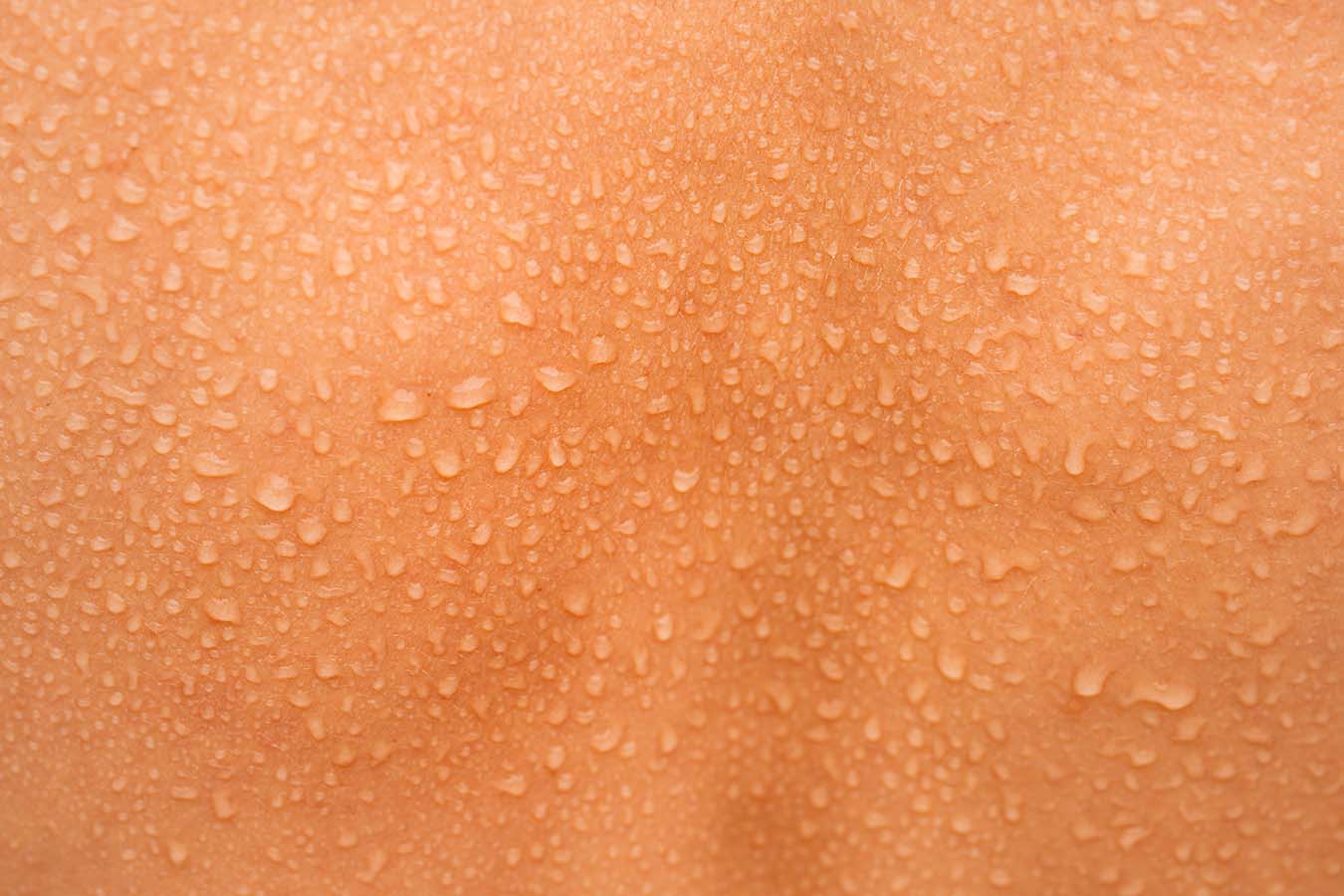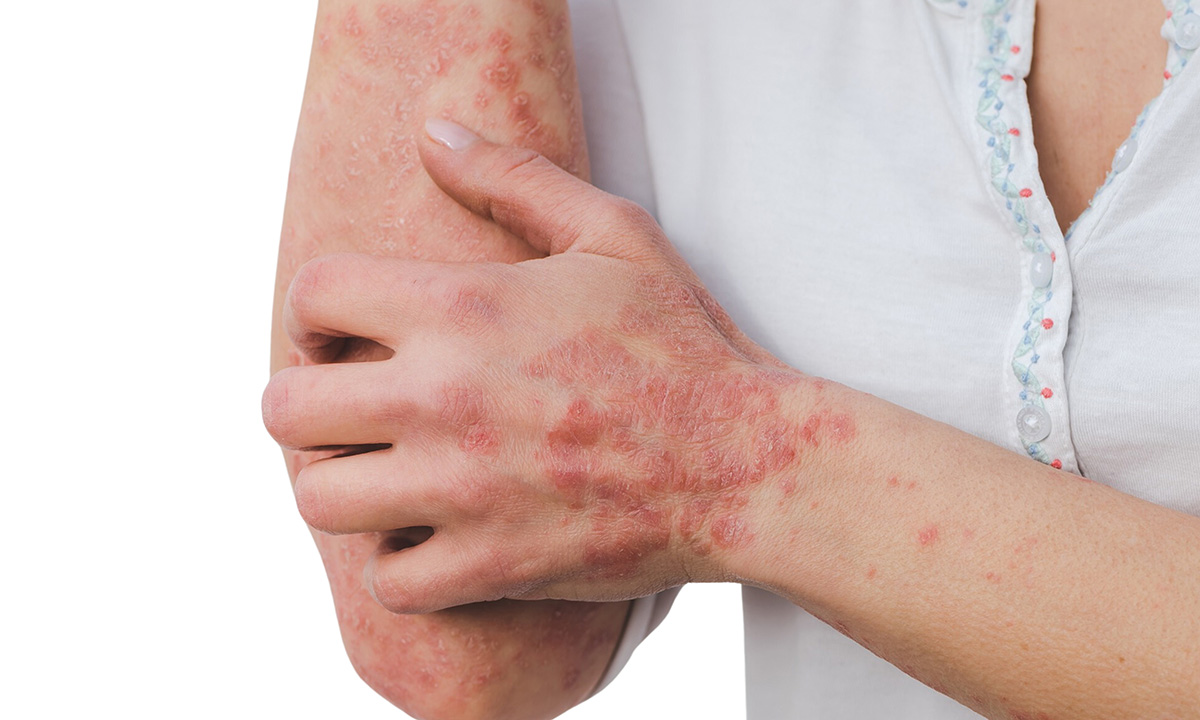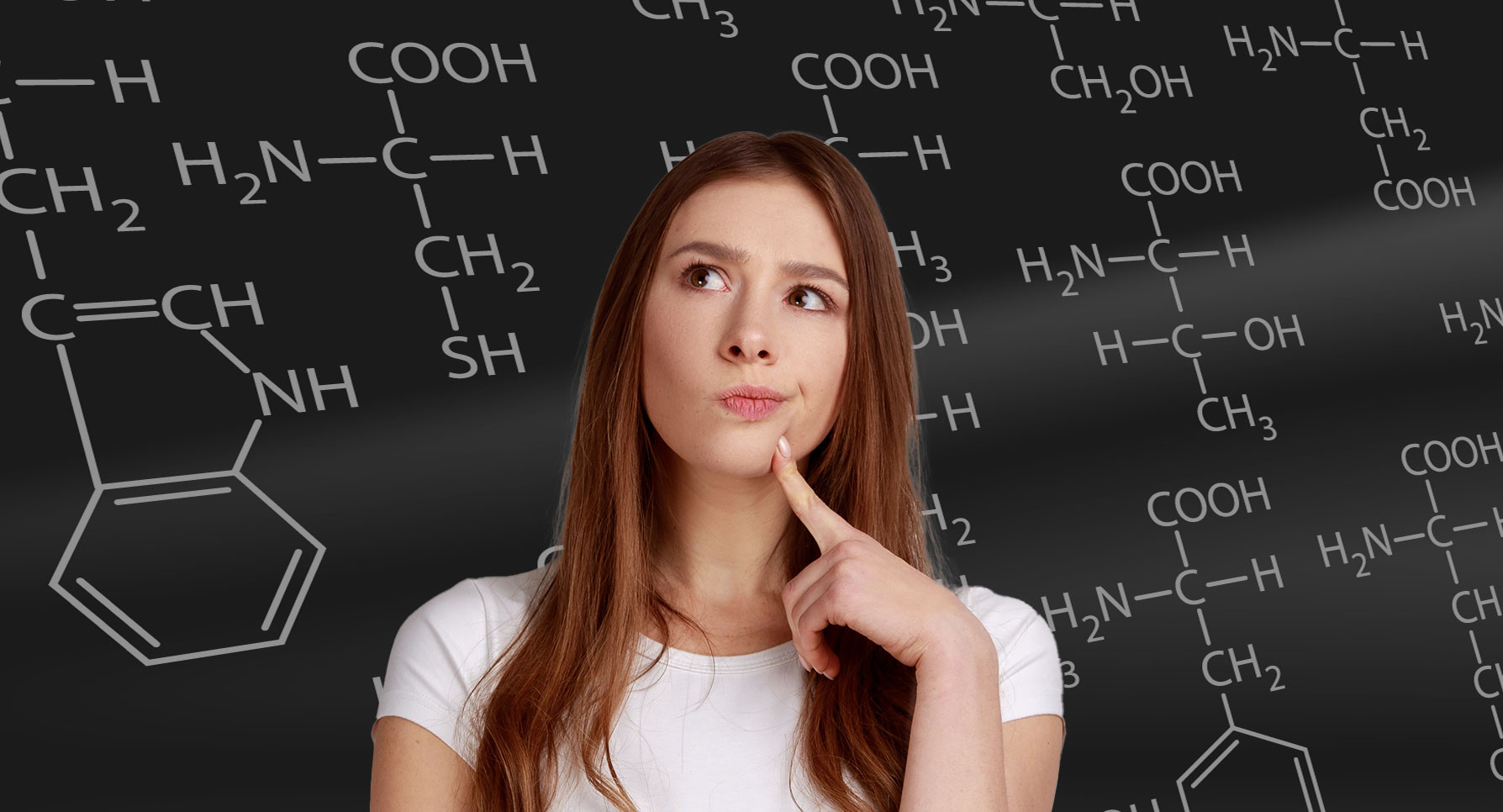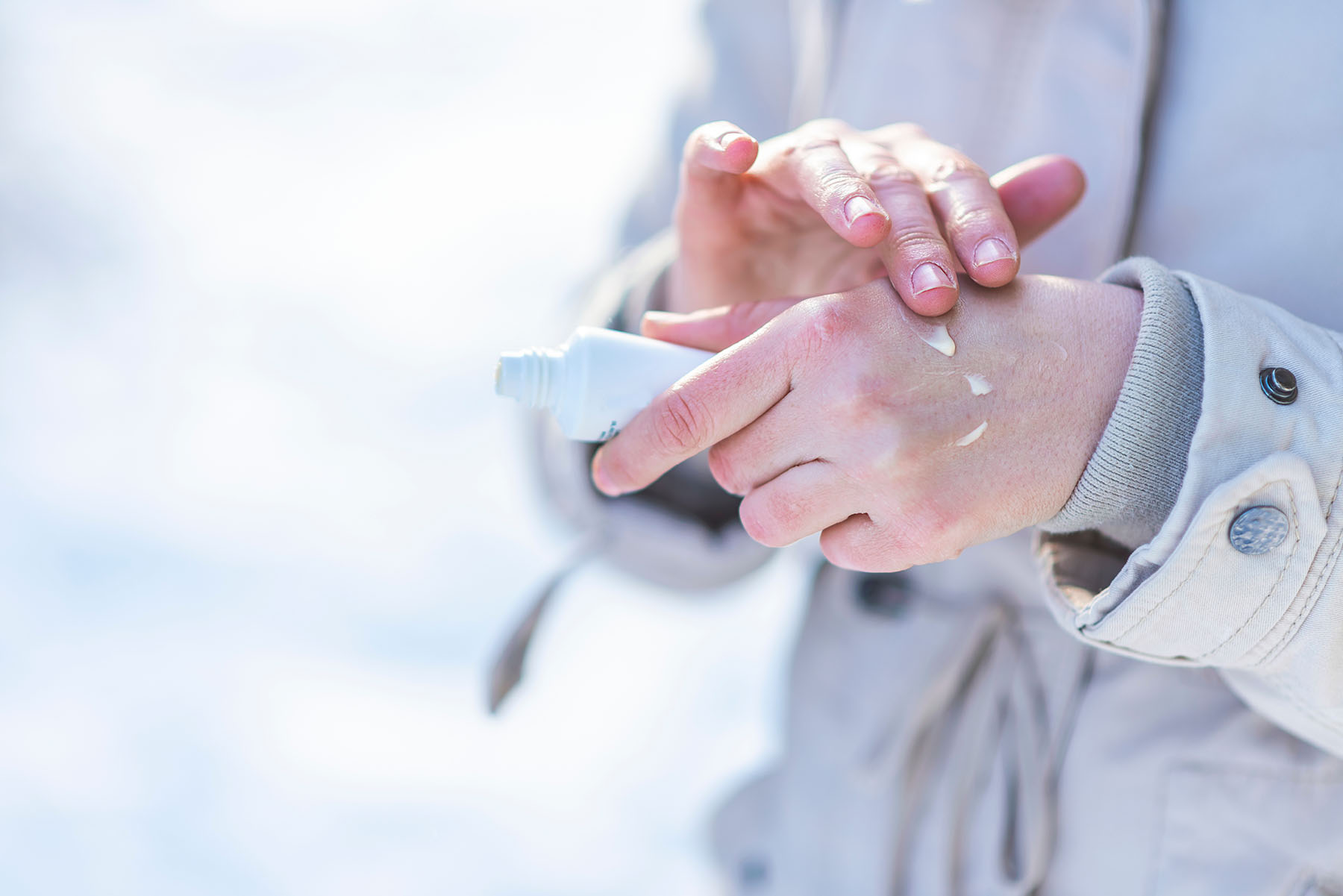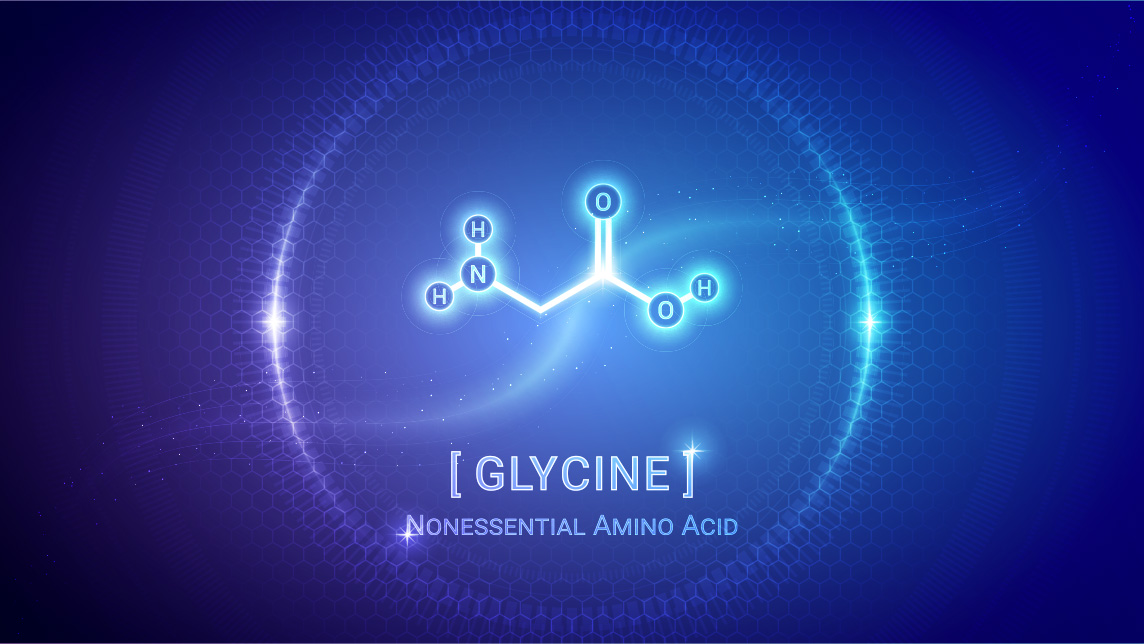
For one, excess protein can cause the build-up of toxins in the system. in his book, Conscious Eating, Dr. Gabriel Cousens, M.D. discusses how ammonia, a by-product of digesting protein, can accelerate aging: “Ammonia, which is a breakdown of a high-flesh-food diet, is directly toxic to the system. It has been found to create free radical damage and cross-linking, as well as depletes the body’s energy.”
For another, excess protein consumption is associated with a decrease in health. A study from the Asia Pacific Journal of Clinical Nutrition found that high-protein diets were associated with “heart arrhythmias, cardiac function impairment, kidney damage, and lipid abnormalities.”
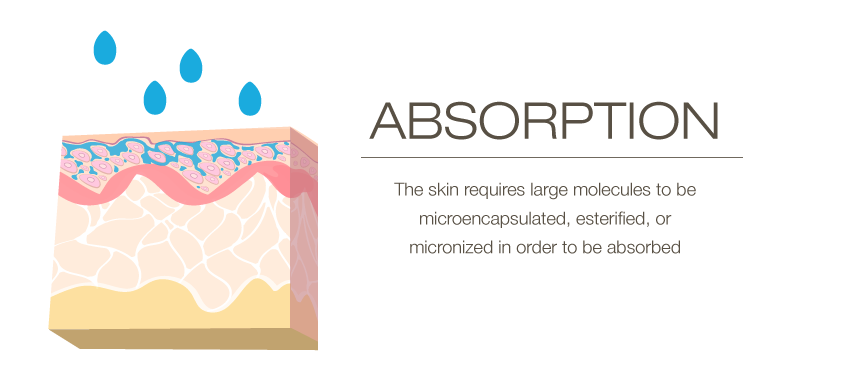
Lastly, in skin care, there is a 500-Dalton rule. Molecules that are smaller than 500 Daltons are able to penetrate through the layers of the skin and be absorbed (Experimental Dermatology). Molecules that are larger than 500 Daltons, like most proteins, are not able to be absorbed. Instead, these sit atop the skin and provide hydration and protection. Some, like larger peptides, may be able to create effects by signaling through the skin. But you cannot make more protein after applying protein to your skin. It’s absurd!
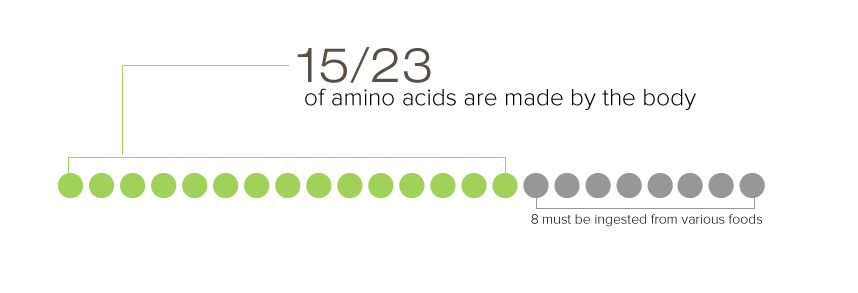
When muscle or skin (or any tissue in the body) is made, amino acids are assembled to form proteins. Of the twenty-three amino acids, fifteen are made by the body, and the other eight must be ingested from foods like broccoli, brussels sprouts, nuts, and seeds, or supplements. These “essential eight” amino acids are:
If you’re worried about an excess, don’t worry: Our bodies naturally will release and store the amino acids we need over a 24-hour period to supplement our amino acid intake and make all of the proteins we need (The Power of Nutrient-Dense Food).
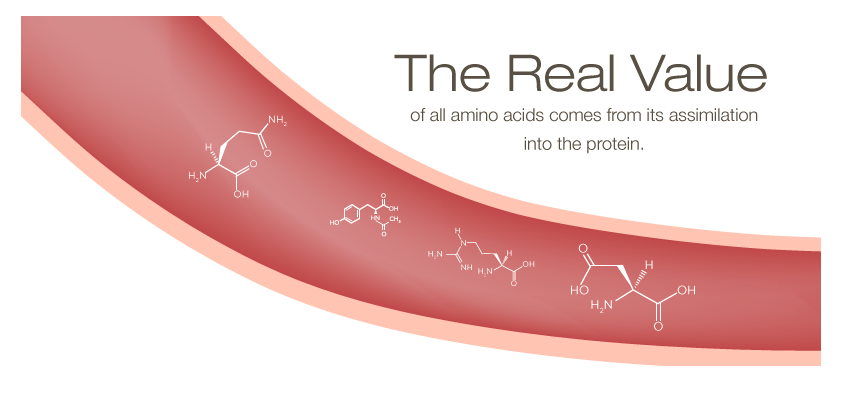
Amino acids, unlike large 1000+ Dalton proteins, are very small and able to penetrate the skin well. Once absorbed within the skin, amino acids are able to be incorporated into collagen, elastin, fibrin, and many other proteins as a part of your body’s natural skin assembly process.
In addition, topically-applied amino acids have been found to fight fine lines and wrinkles (European Journal of Dermatology, 2013), hydrate (Journal of Peptide Science, 2012), promote wound healing (JPEN, 2014), prevent infections (PLoS Pathogens, 2008), and boost protein synthesis within the skin (Minerva Pediatrica, 2014).
leo.

t’s a lot better to eat foods and apply skin care that are rich in amino acids (like Simply Better Skin Care Products), rather than eating and slapping on a lot of protein. Excess protein consumption has been associated with toxic side effects such as heart and kidney disease, heart arrhythmias, and lipid abnormalities, whereas topically applying proteins does not work, as they are too large to penetrate the skin.
On the other hand, amino acids are ingestible and cleared out by the system within 24 hours. By applying amino acids, these are able to penetrate the skin and be assembled into proteins naturally, with many other anti-aging benefits as well.

